Resources of the Cornell Lab of Ornithology
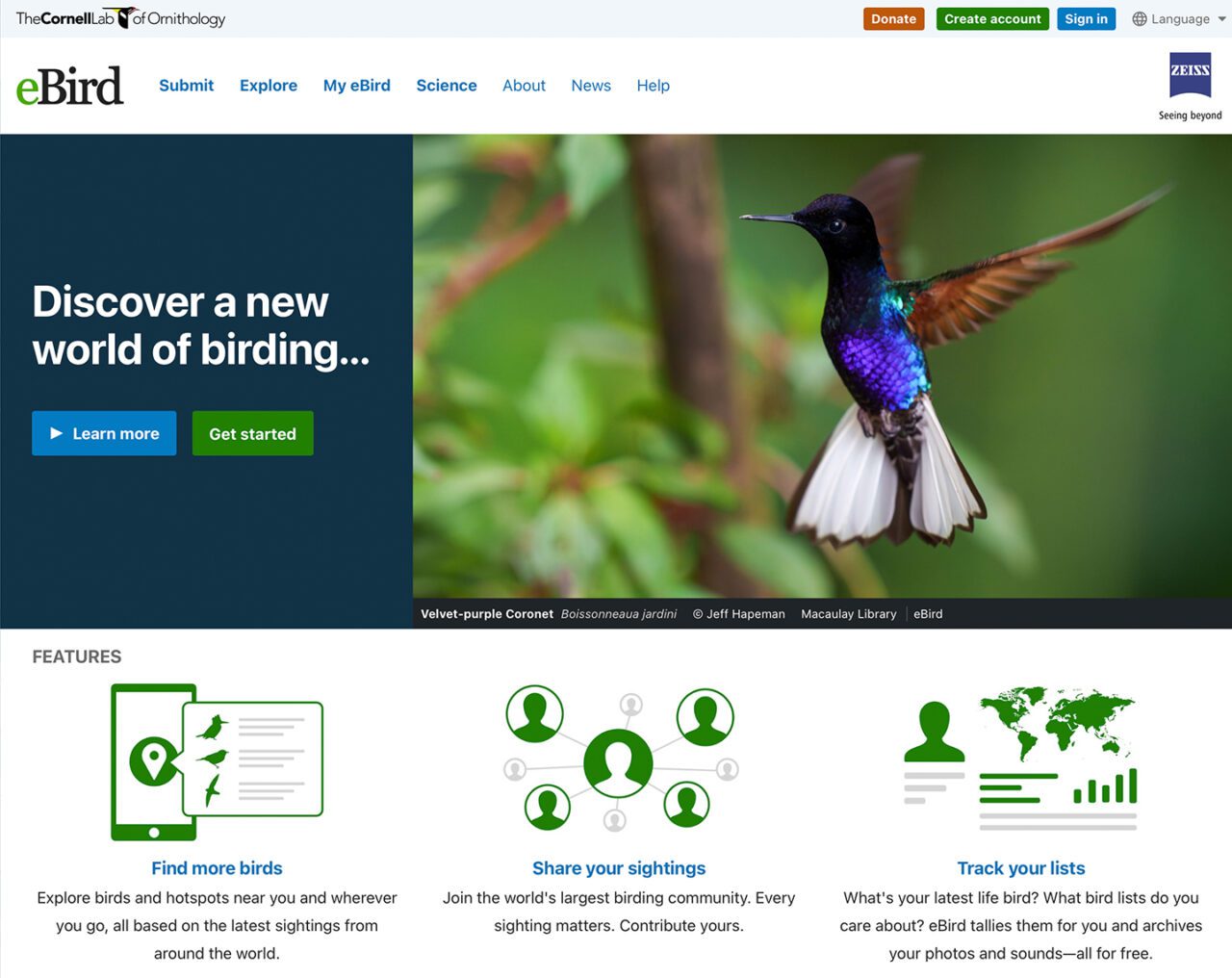
eBird
eBird is among the world’s largest biodiversity-related science projects, with more than 100 million bird sightings contributed annually by eBirders around the world and an average participation growth rate of approximately 20% year over year. A collaborative enterprise with hundreds of partner organizations, thousands of regional experts, and hundreds of thousands of users, eBird is managed by the Cornell Lab of Ornithology. Our goal is to gather this information in the form of checklists of birds, archive it, and freely share it to power new data-driven approaches to science, conservation and education. At the same time, we develop tools that make birding more rewarding. From being able to manage lists, photos and audio recordings, to seeing real-time maps of species distribution, to alerts that let you know when species have been seen, we strive to provide the most current and useful information to the birding community.
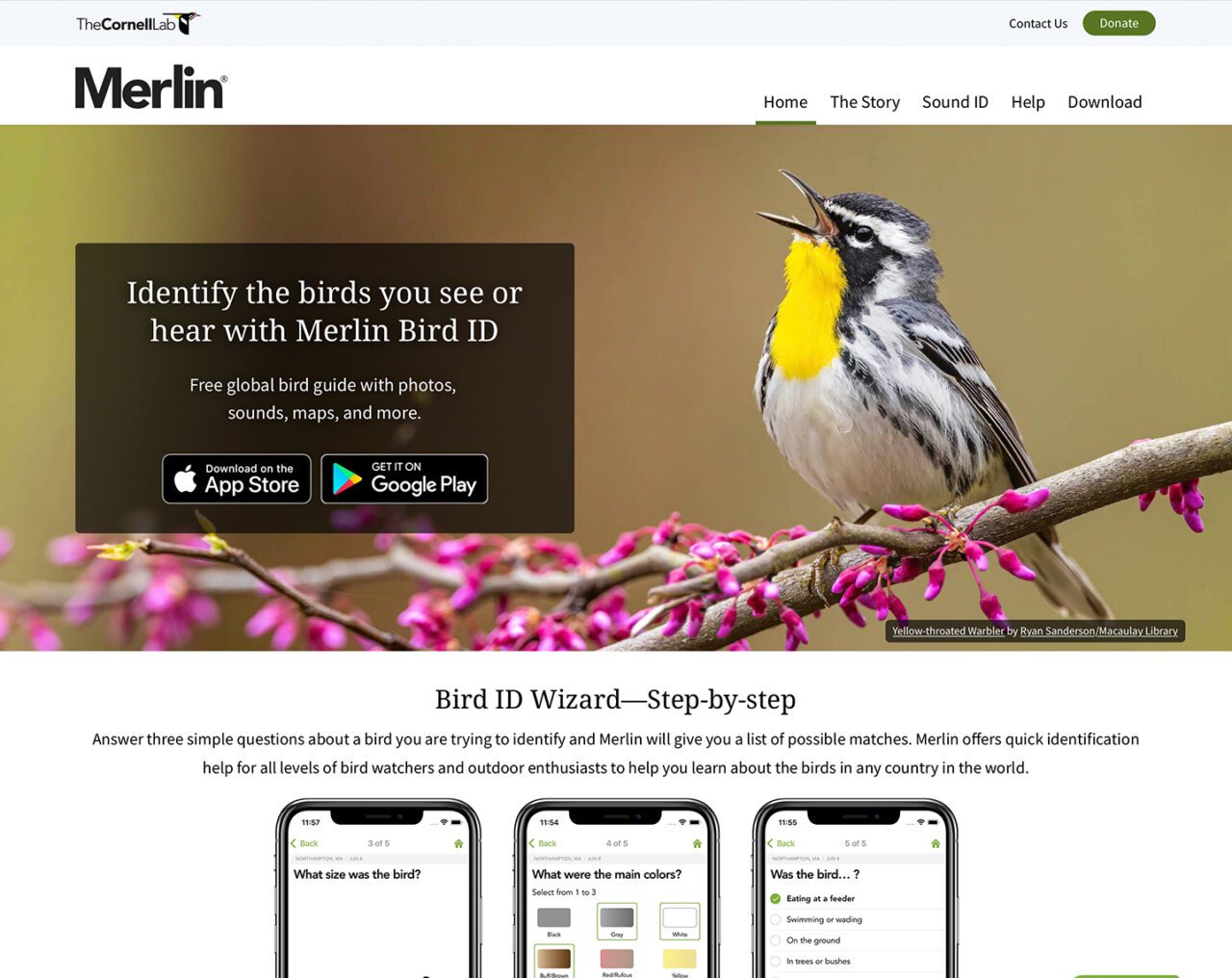
Merlin
Merlin is designed to be a birding coach for bird watchers at every level. Merlin asks you the same questions that an expert birder would ask to help solve a mystery bird sighting. Notice that date and location are Merlin’s first and most important questions. It takes years of experience in the field to know what species are expected at a given location and date. Merlin shares this knowledge with you based on more than 800 million sightings submitted to eBird from birders around the world. They’ve contributed more than 3 million descriptors to help Merlin match your input with the most likely birds. When you identify a species and click “This is My Bird,” Merlin also saves your record to help improve its future performance.
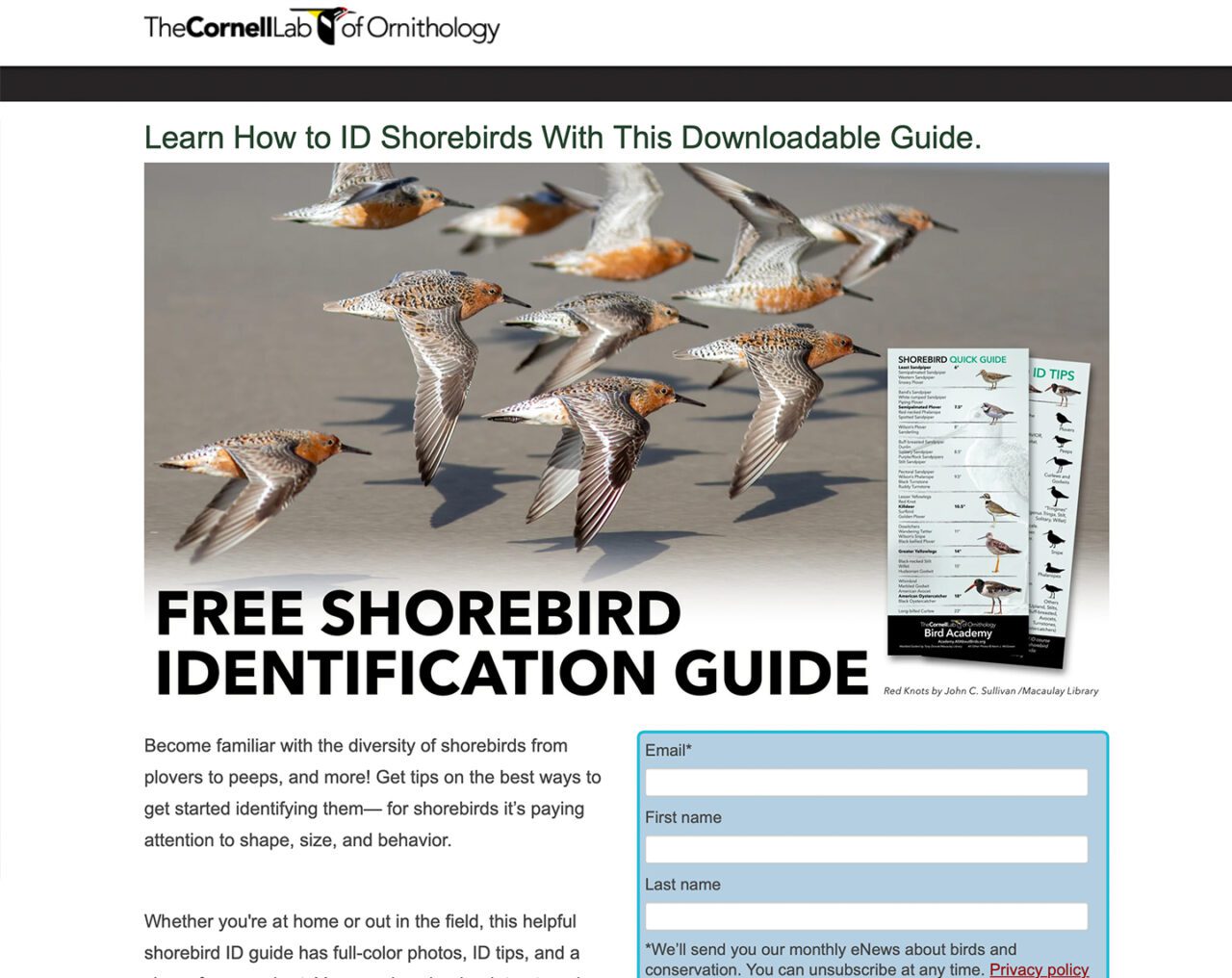
Shorebird Identification Guide
Whether you’re at home or out in the field, this helpful shorebird ID guide has full-color photos, ID tips, and a size reference chart. Become familiar with the diversity of shorebirds from plovers to peeps, and more! Get tips on the best ways to get started identifying them— for shorebirds it’s paying attention to shape, size, and behavior. You can download it free, print out, and bring this guide with you, courtesy of Dr. Kevin McGowan and Bird Academy.
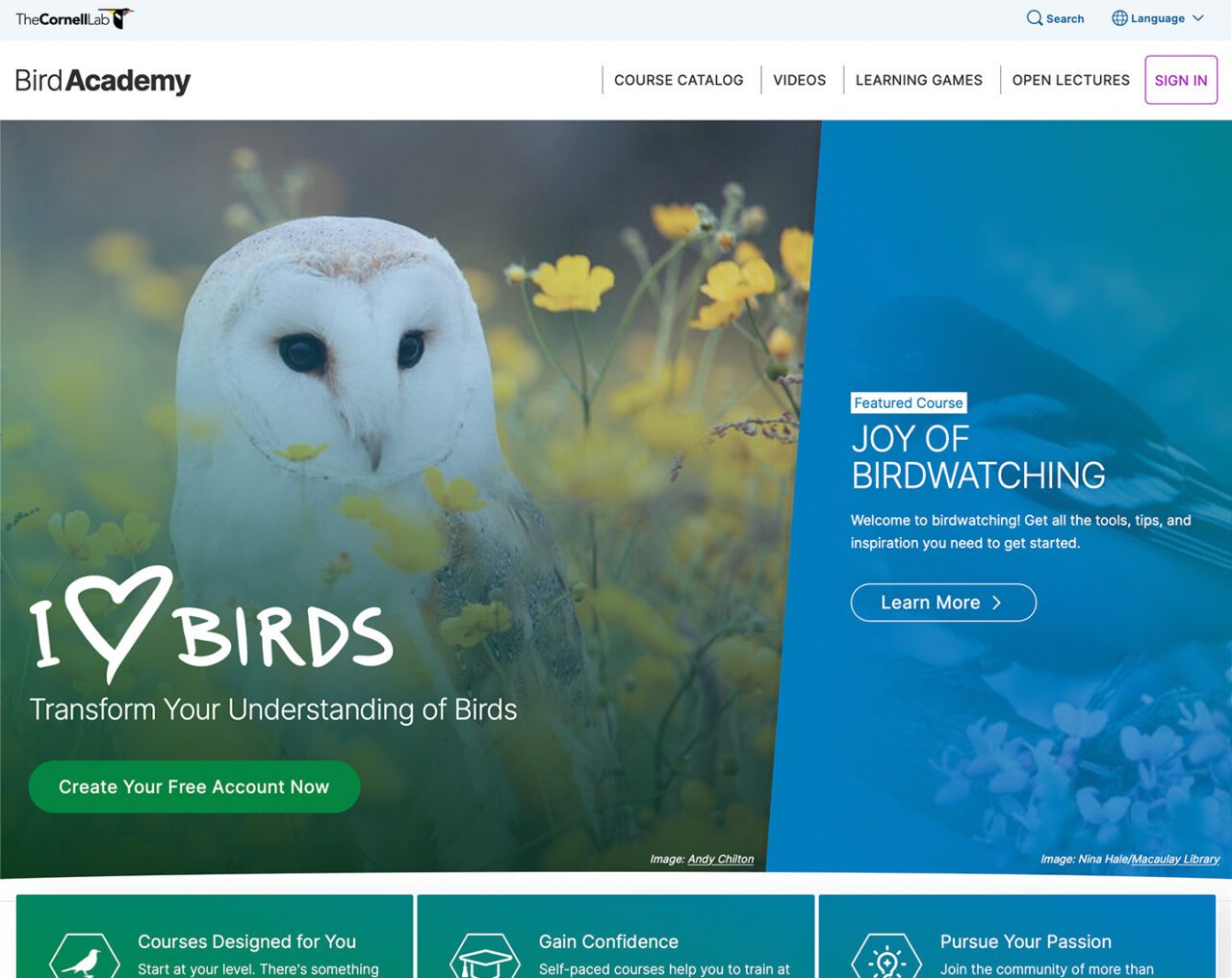
Bird Academy
Brought to you by the Cornell Lab, Bird Academy is continuing a century-old tradition of sharing the wonder and joy of birds far beyond our walls. Thanks to Cornell Lab founder Arthur “Doc” Allen, who opened the Lab’s doors to the public on Monday evenings for seminars created to celebrate the science and beauty of birds. We’ve never stopped in our mission to help people of all walks of life understand and connect with birds.Whether you’re newly curious about what you’re hearing in your backyard, an avid birder with a life list to tend, or a budding ornithologist, Bird Academy’s team of biologists, educators, and designers are here to help you learn about the great world of birds.
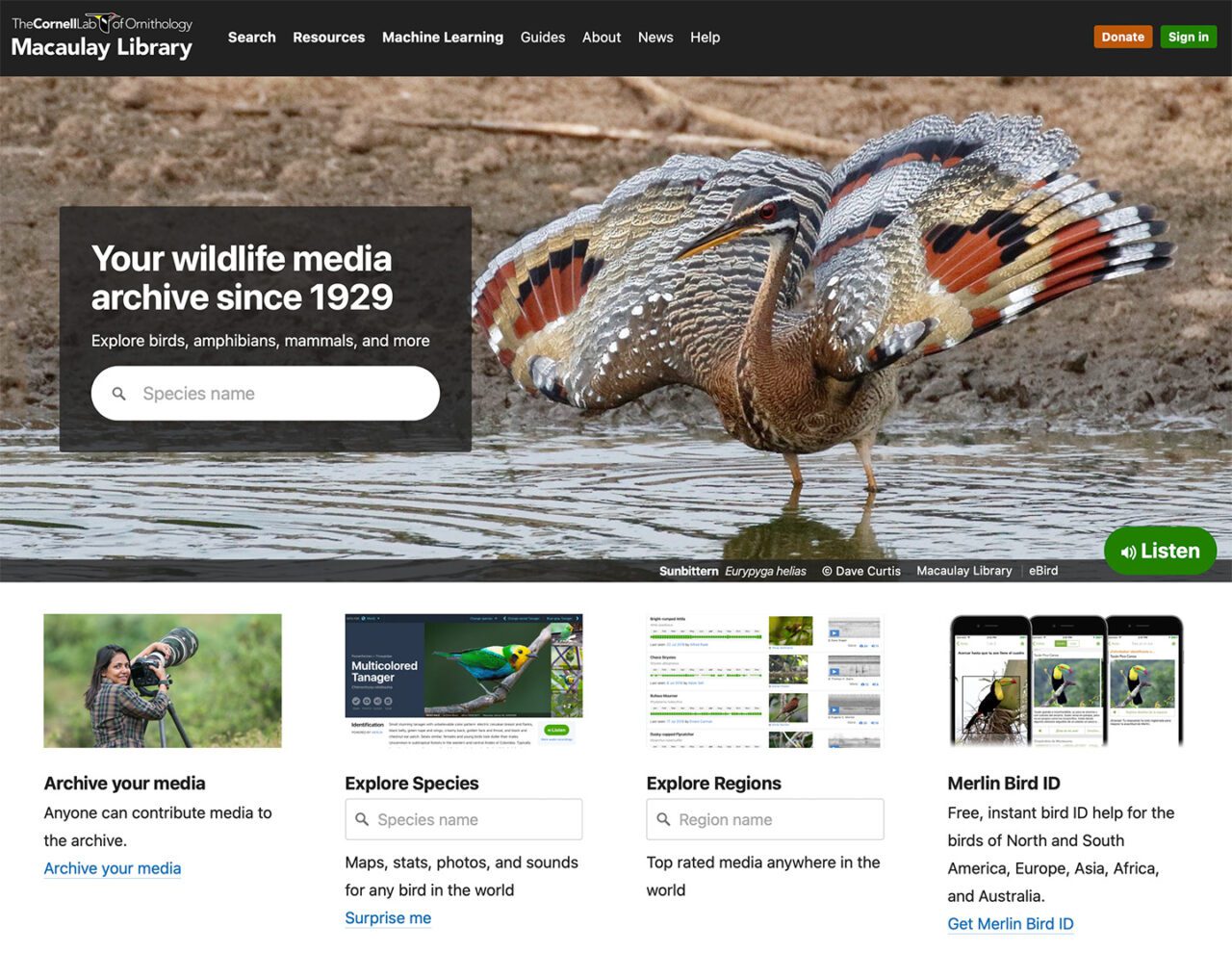
Macaulay Library
The Macaulay Library is the world’s premier scientific archive of natural history audio, video, and photographs. Although the Macaulay Library’s history is rooted in birds, the collection includes amphibians, fishes, and mammals, and the collection preserves recordings of each species’ behaviour and natural history. Our mission is to facilitate the ability of others to collect and preserve such recordings and to actively promote the use of these recordings for diverse purposes spanning scientific research, education, conservation, and the arts. Access to audio and video recordings in the archive is available for research, educational, and commercial use. If you would like to contribute to the archive, you can submit your bird recordings and photos via the eBird/Macaulay Library media upload tool.
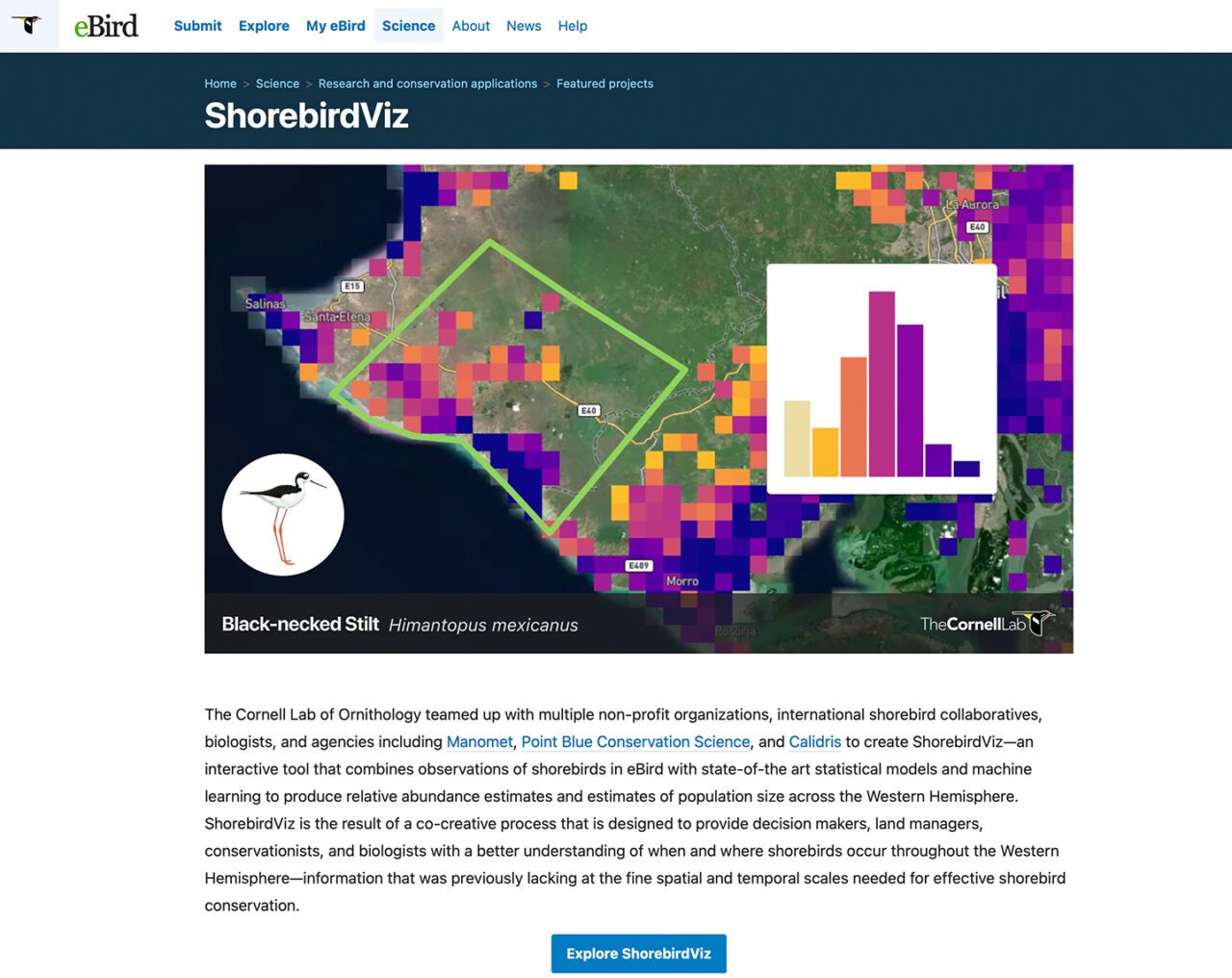
ShorebirdViz
The Cornell Lab of Ornithology teamed up with multiple non-profit organizations, international shorebird collaboratives, biologists, and agencies including Manomet, Point Blue Conservation Science, and Calidris to create ShorebirdViz—an interactive tool that combines observations of shorebirds in eBird with state-of-the art statistical models and machine learning to produce relative abundance estimates and estimates of population size across the Western Hemisphere. ShorebirdViz is the result of a co-creative process that is designed to provide decision makers, land managers, conservationists, and biologists with a better understanding of when and where shorebirds occur throughout the Western Hemisphere—information that was previously lacking at the fine spatial and temporal scales needed for effective shorebird conservation.
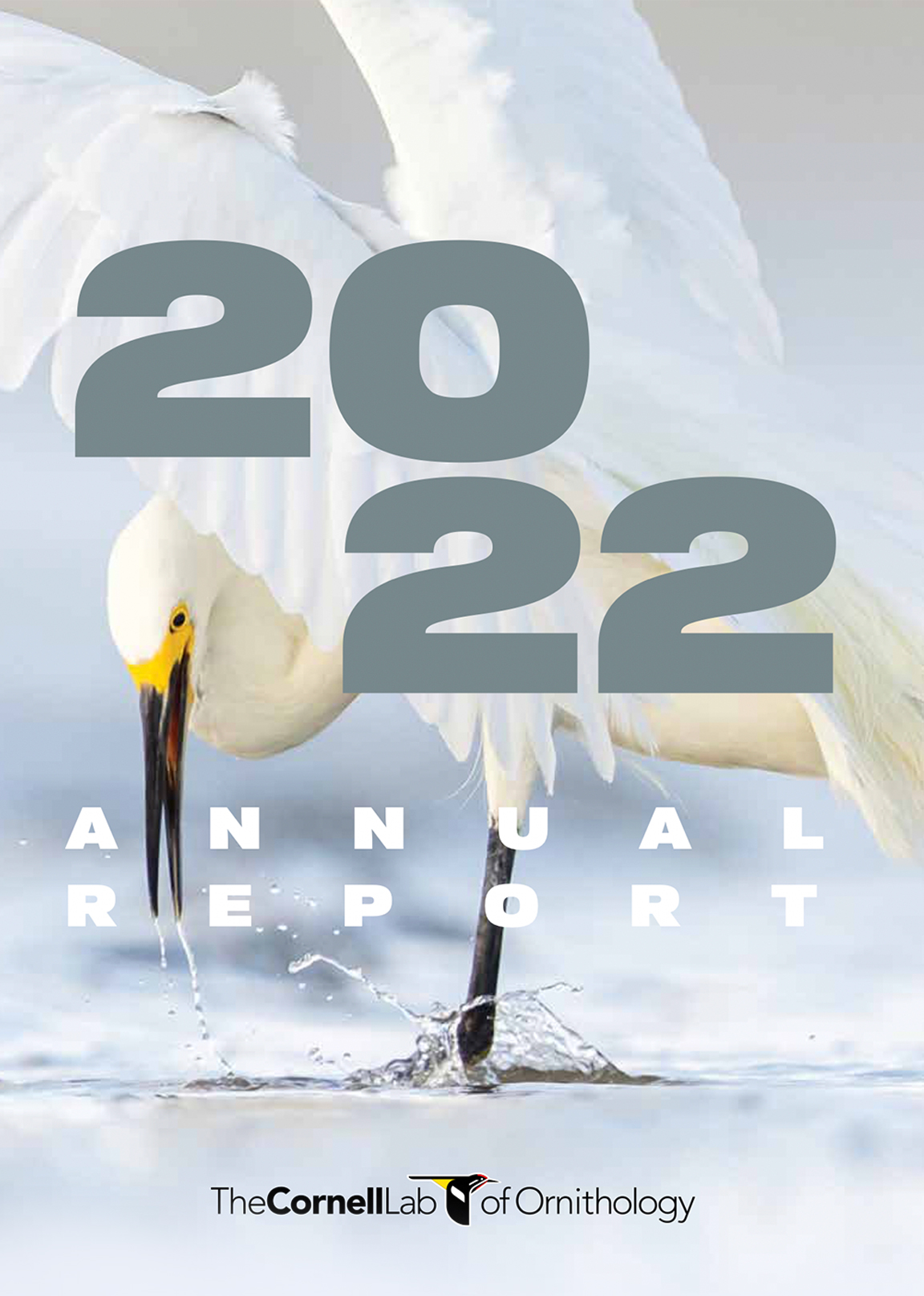
CLO Annual Report 2022
The Cornell Lab of Ornithology Annual Report 2022 is set to ‘Sparking Action and Bending the Curve’ of bio and bird diversity loss. As the loss of 3 billion birds in North America shows, the Earth is losing its biodiversity—losing both the richness and the abundance of life signal the health of the planet.
The urgency and scale of the loss of biodiversity can seem daunting, but it’s also motivating. Four key strategies guide our efforts to reverse the declining curve of birds and biodiversity and amplify the impact of each individual who connects with nature through the Cornell Lab.
Together, we’re:
- Using the results of science to inform and guide actions that benefit biodiversity.
- Developing innovative technologies so people can see, hear, and study the natural world in ways that are just now becoming possible.
- Fostering an interdisciplinary approach by bringing together scientists and other professionals from diverse backgrounds to collaborate in myriad ways.
- Engaging people from around the world to learn about, record, and take action to help birds and biodiversity”
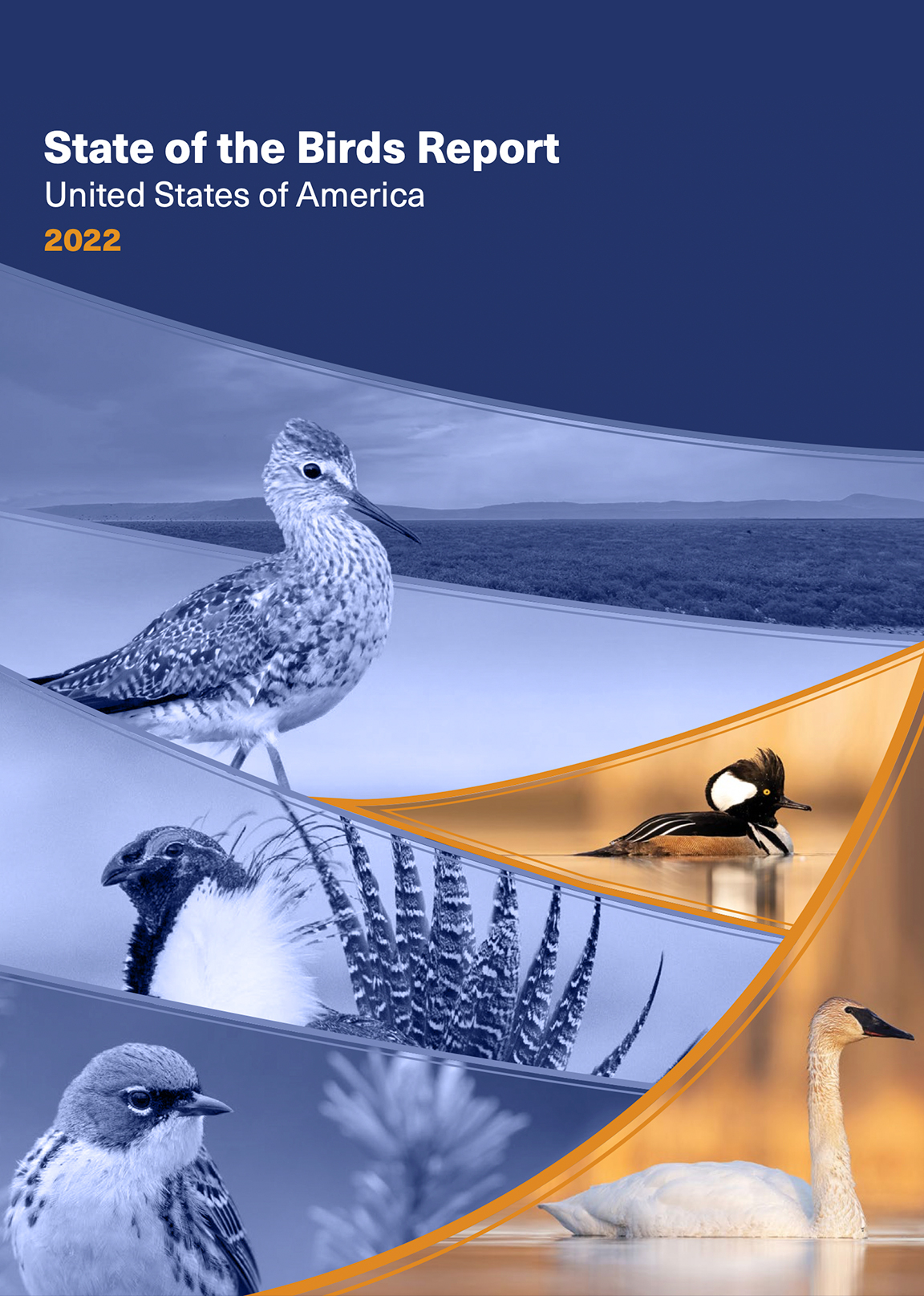
State of the Birds Report
The 2022 State of the Birds report presents data on changes in bird populations across habitats of the United States in the past five decades. These changes are shown for the groups of breeding species that are most dependent on each habitat and for which long-term monitoring data are available. Population rebounds of waterfowl show that when investments in habitat conservation are made, we can bring birds back. At the same time, continuing declines in other habitats show the critical need to restore ecosystems under stress. The Birds of Conservation Concern (BCC) list, mandated by law and updated by the U.S. Fish and Wildlife Service, identifies 269 migratory nongame bird species that, without additional conservation actions, are likely to become candidates for listing under the Endangered Species Act. In this report, scientists with the Road to Recovery initiative have identified 70 Tipping Point species from the BCC and/or state lists of Species of Greatest Conservation Need. These birds have lost half or more of their populations in 50 years and are on a trajectory to lose another half in the next 50 years—or they already have small remaining populations and face high threats, but lack sufficient monitoring data. The following pages highlight the plight of birds in each habitat, with the pronounced declines of Tipping Point species shown in red, for species with sufficient data. In addition to summaries of trends, this report also highlights conservation opportunities and successes in each biome, as examples of how actions that benefit birds create healthier environment”.